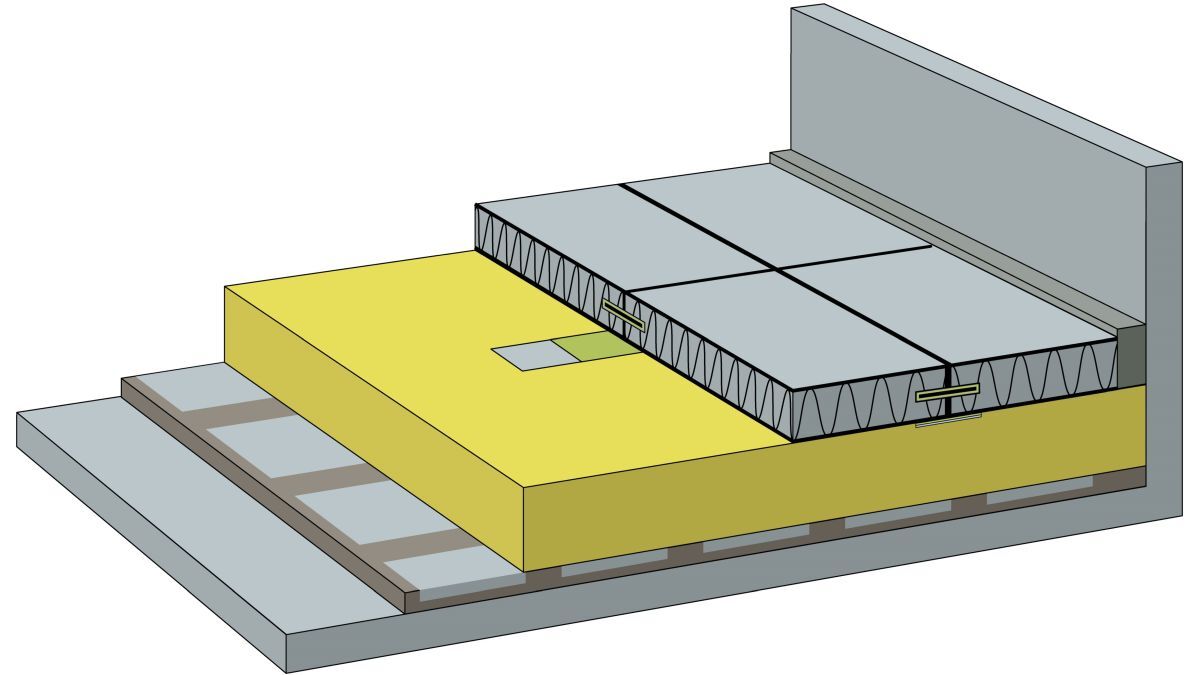The Sikafloor Marine Ultralight Floating Floor can save €1.3M every year in fuel consumption for a cruise ship of over 300 m (source: Sika Marine)
Sika Marine explains why its floating floor will be the way forward for shipbuilding
Sika Marine’s new Sikafloor Marine Ultralight Floating Floor solution will be the “new standard” for the cruise ship industry.
Sika corporate market field manager marine Michiel Bos tells Passenger Ship Technology, “This will be the new standard of the industry, the way forward for shipbuilding.”
Launched at this year’s SMM trade show in Hamburg, the new product saves substantial amounts of weight and therefore fuel and offers a robust performance in noise and vibration damping.
Mr Bos says, “It is sustainable in multiple ways, and we can save €1.30M (US$1.28M) every year in fuel consumption, equating to one tonne a day, for a big cruise ship of over 300 m, when compared with the original way of floating floor constructions with our Sikafloor Marine Litosilo Steel system. It saves more than 560 tonnes of steel on that ship, so the ship can increase its passengers, or sail further or faster for the same fuel amount.”
The Sikafloor Marine Ultralight Floating Floor deploys Sika Marine’s visco-elastic technology, which is again a step into a sustainable future as it uses cement rather than polyurethane. The flooring is 98% recyclable.
Mr Bos’ figures come from an independent study conducted by Germany-headquartered GSR Service to compare the benefits of its new flooring with its existing Sikafloor Marine Litosilo Steel system. This study also found Sika’s new flooring offers a saving of 33 kg per square metre, and more than 1,200 tonnes of CO2 emissions.
Sika Marine’s new floating floor is aluminum versus the usual steel floating floor. “Normally we install steel floating floors, but this time we have designed an aluminum panel that is specially fabricated and bonded in a very specific way as part of the full flooring system,” says Mr Bos.
Sika has produced a whitepaper on its ultralight floating floor that includes an explanation on its noise-reduction performance. The paper says at Denmark’s Tekniske Universitet, Sika performed sound tests with the combination of Sikafloor VEM viscoelastic technologies, the Sikafloor Marine UL FF floating floor systems and it can include a synthetic, watertight levelling compound.
“It is sustainable in multiple ways, and we can save €1.3M every year in fuel consumption”
The paper says, “The Sikafloor Marine VEM190 and Sikafloor Marine VEM-X visco-elastic systems are damping structure-borne noise by transferring vibration energy into heat caused by the friction between the constrained layer and steel deck with the viscoelastic layer causing that effect. The Sikafloor Marine UL FF floating floor system reduces the propagation of airborne and impact noise to the adjacent compartments and decks above.”
Despite being so lightweight, it has the same acoustic dampening and noise cancelling abilities as a standard product. The usual product includes around 50 kg of steel per square metre and insulation, both of which are used to limit vibrations and reduce airborne noise. The new floating floor only has around 15 kg per square metre.
Mr Bos explains that normally, a floating floor offers around 55 to 58 decibels of airborne sound reduction, but Sika is ahead of the market with 60-61 decibels Rw value with its current products. “This is the highest measurable acoustic reduction. We are at 58 with our new ultralight floor and that is why it is so groundbreaking. Sika now has a unique, lightweight but quiet system that can be used in cruise ship constructions, as it can take the load of rolling in cabins of more than 2.500 kg /m2 in weight. A truly great step into a sustainable future,” says Mr Bos.






